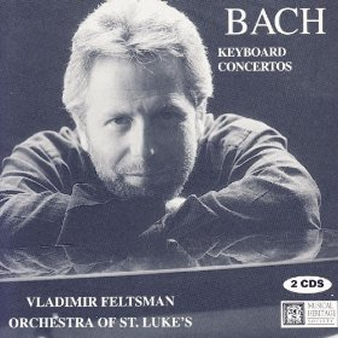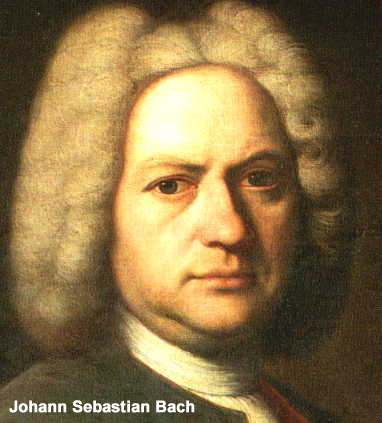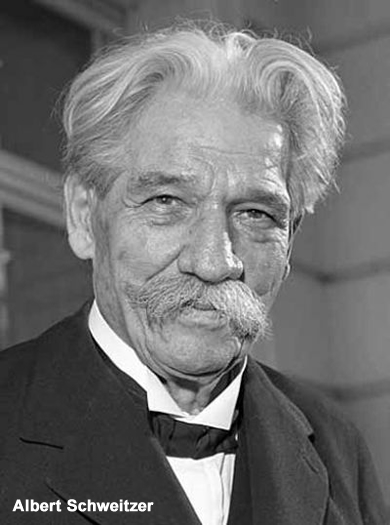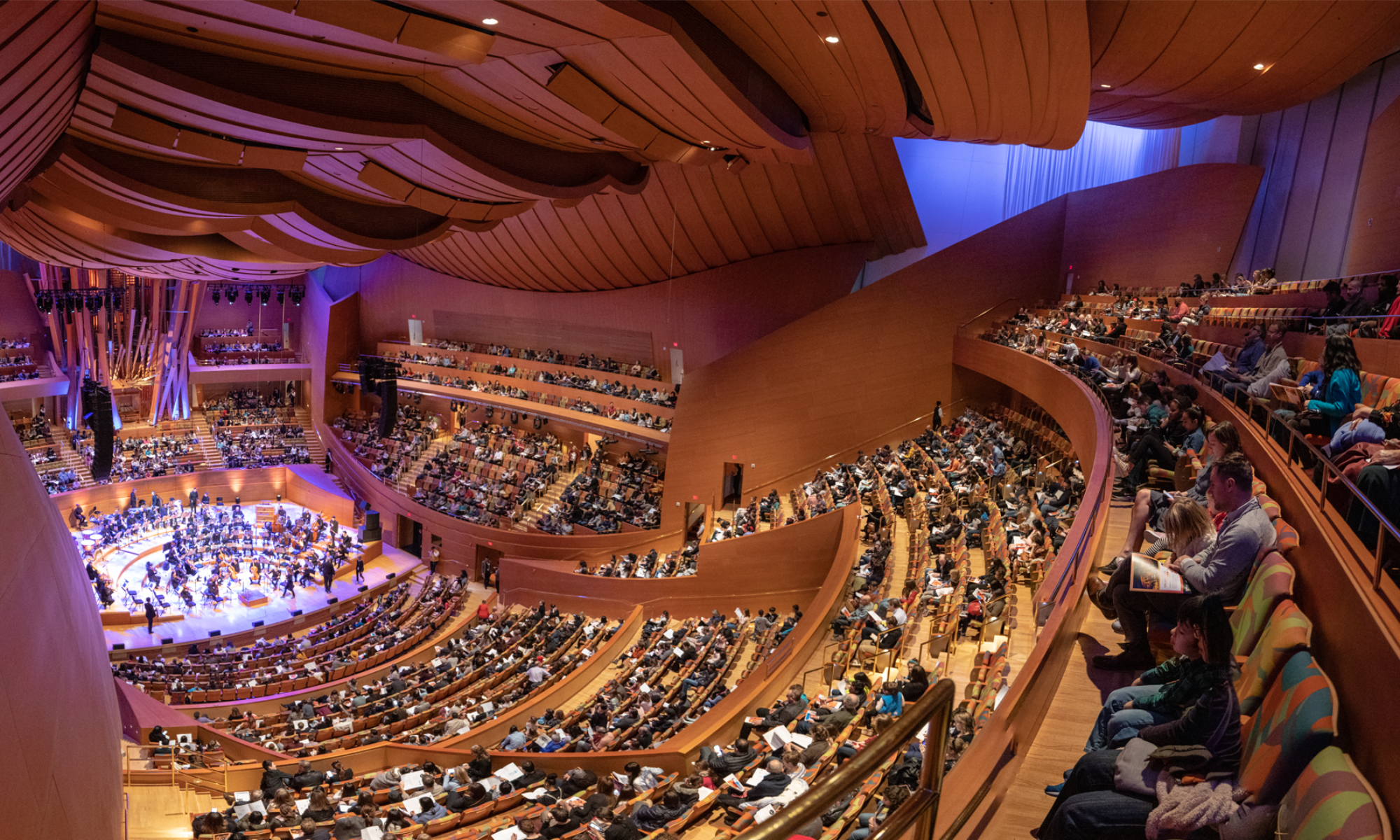 Johann Sebastian Bach (1685-1750)
Johann Sebastian Bach (1685-1750)
Keyboard Concertos
Concerto Nach Italienischem Gusto
Vladimir Feltsman, Pianist & Conductor – The Orchestra of St. Luke’s. Recorded July 12, 13, and 14, 1993 at the American Academy and Institute of Arts and Letters (Musical Heritage Society)
ONE-SENTENCE REVIEW:
Smooth, clean and by the book, Vladimir Feltsman does a very workmanlike job on the “Keyboard Concertos” (originally written for violin or oboe) of J.S. Bach – though the ghost of Gould lingers.
ORIGINAL LINER NOTES (by Tim Page):
Styles change, and it is a relief for those of us who have always enjoyed listening to – and playing – Bach’s music on the piano not to have to make any more apologies for our taste.
 I acknowledge that the piano many not have been the instrument for which Bach wrote these pieces – for that matter, the concertos on this disc were not originally intended for keyboard at all – but, in an era where there are any number of “authentic” recordings on clavichord or harpsichord available, why shouldn’t we explore the multiplicity of colors, textures and dynamics intrinsic in Bach’s music that can only be made accessible by a pianist?
I acknowledge that the piano many not have been the instrument for which Bach wrote these pieces – for that matter, the concertos on this disc were not originally intended for keyboard at all – but, in an era where there are any number of “authentic” recordings on clavichord or harpsichord available, why shouldn’t we explore the multiplicity of colors, textures and dynamics intrinsic in Bach’s music that can only be made accessible by a pianist?
As the late Glenn Gould once observed, back in the days when musicological dogma was at its most rigid, if you take the notion of authenticity too far, about the only thing a conscientious musician would be able to play proudly on a modern piano was Rachmaninoff – and even that would have to be played on a turn-of-the-century Bosendorfer or German Steinway!
All of Bach’s keyboard concertos were originally scored for small orchestra and solo violin or oboe. Perhaps the greatest self-transcriber of all time, Bach blithely recycled this music for other pieces (for example, two movements of the Concerto in D Minor, BWV 1052, are also to be found in the cantata “Wir muessen durth viel Treubsal,” BWV 146) and then, working at what seems to have been unusual haste even for the man who regularly churned out a cantata each week, he wrote down all of his keyboard concertos in a single manuscript volume, apparently sometime around 1735.
The Concerto in D Minor, BWV 1052, is a vast, panoramic structure in three large movements that prefigures the romantic piano concerto to a remarkable degree (indeed, Felix Mendelssohn, who did so much to revive Bach’s reputation in the early 19th century, loved to perform this work).
The violin concerto from which this was presumably transcribed has not survived, but an early version for keyboard does exist; curiously, this was probably arranged not by Bach but by one of his sons, Carl Philipp Emanuel Bach.
 The opening movement, in particular, is one of Bach’s grandest conceptions – an extended tutti in unison leads directly to a flowing, meditative passage for the piano; throughout, Bach seems to be straining against formal strictures even as he is fulfilling them flawlessly.
The opening movement, in particular, is one of Bach’s grandest conceptions – an extended tutti in unison leads directly to a flowing, meditative passage for the piano; throughout, Bach seems to be straining against formal strictures even as he is fulfilling them flawlessly.
Likewise, we do not have the original version of the Concerto in E, BWV 1053, but it, too, seems to have been written for violin. In any event, Bach raided it for subsequent cantatas (this time for BWV 49, “Ich geh’ und suche mit Verlangen,” and BWV 169, “Gott soll allein mein Herze haben”) before turning it into this keyboard concerto.
As James Goodfriend, the former music editor of Stereo Review, once observed: “Bach produced both sacred and secular music on demand and, with the pressure of immutable deadlines, borrowed freely from one for the other with no feeling of sacrilege.”
Happily, in the case of the Concerto in D, BWV 1054, we have Bach’s original on hand; the familiar Violin Concerto in E, BWV 1042, one of the treasures of the string repertory. It is not clear why Bach lowered the concerto a whole tone when he decided to transcribe it for keyboard (perhaps to bring the violin part more fully within the range of the harpsichord); the transcription will surprise – and possibly bother – those listeners with perfect pitch who are used to the original.
Critical consensus tends to favor the violin version of this concerto over the arrangement for keyboard, but I find much to admire in the later version, particularly the bracing muscularity of the outer movements. (Ingmar Bergman made unforgettable use of the central Adagio of the violin concerto in his film Persona.)
“Ultimately, for Bach, the process of composition was an unending one,” the New Grove Dictionary of Music and Musicians has rightly observed. “Dynamic markings and indications of articulation would be inserted as he looked through the parts; he would revise and improve a work when he was copying it out, and when giving further performances would make fresh alterations and improvements. He also inserted corrections, already in print. Throughout his life, Bach was his own severest critic. Even in works which went through two or three difference versions… the ‘final’ version does not represent a definitive one but merely a further state in the search for perfection – the central and ultimate concern of Bach’s method of composition.”
 Albert Schweitzer, the organist and humanitarian, loved Bach as have few others. Yet, in his two-volume study of the composer, he had some withering words for the keyboard concertos: “Bach needed clavier concertos when he directed the Telemann Society. The arrangements are often made with quite incredible haste and carelessness; either time was pressing, or he felt no interest in what he was going. Violin effects to which he could easily have given a pianistic turn are not remodeled at all; later on he improves them here and there in the score but leaves them as they are in the clavier part…” “We are under no special obligation to incorporate these transcriptions in our concert programmes,” Schweitzer concluded.
Albert Schweitzer, the organist and humanitarian, loved Bach as have few others. Yet, in his two-volume study of the composer, he had some withering words for the keyboard concertos: “Bach needed clavier concertos when he directed the Telemann Society. The arrangements are often made with quite incredible haste and carelessness; either time was pressing, or he felt no interest in what he was going. Violin effects to which he could easily have given a pianistic turn are not remodeled at all; later on he improves them here and there in the score but leaves them as they are in the clavier part…” “We are under no special obligation to incorporate these transcriptions in our concert programmes,” Schweitzer concluded.
Many of us will disagree and I think this disc can stand as eloquent refutation of the good Doctor’s last statement. It was Bach’s habit to work quickly – this is, after all, a man who was capable of producing a whole cantata every week – and if there are signs of haste in the concertos, it is still the haste of an extraordinarily great musician. Some of the material is recycled, to be sure, but that’s certainly no rarity in Bach (who was loathe to waste a good idea by using it just once and some of the passages are not fleshed out for keyboard in the tidy manner that we associate with more academic composers).
Yet the fact remains that these concertos have proven remarkably durable. They are perhaps more popular today than at any previous time; recordings and performances are proliferating and there is no end in sight.
The Concerto No. 4 in A, BWV 1055, seems to have begun life as either a concerto for violin or for oboe d’amore, in either case probably written during Bach’s tenure in Cothen, around 1720; Bach transcribed it for keyboard (along with the other keyboard concertos) more than a decade later. It is a brisk, buoyant work in three brief movements, smaller in scale than several of the others, yet boasting rather more soloistic filigree for the keyboard than was customary for Bach in these works.
 The Largo of the Concerto No. 5 in F Minor, BWV 1056, is far and away the most famous movement in any of Bach’s keyboard concertos – most likely due to its use as the theme for the 1972 film Slaughterhouse Five.
The Largo of the Concerto No. 5 in F Minor, BWV 1056, is far and away the most famous movement in any of Bach’s keyboard concertos – most likely due to its use as the theme for the 1972 film Slaughterhouse Five.
Curiously, some commentators have questioned the concerto’s authenticity (at least one musicologist has suggested that it may have been written by Vivaldi, whose music Bach admired and transcribed). I find this unlikely – there is a distinctly Bach-ian mixture of austerity and drama throughout the work; moreover, Bach had already used the Largo as the introduction for one of his cantatas, “Ich steh’ mit einem Fuss im Grabe,” BWV 156 (where the melody is taken up, quite convincingly, by the oboe). Whether originally fashioned for violin, oboe – or even by some other composer – this is a justly popular piece, with the exquisitely calm and centered Largo providing a calm between two highly stormy outer movements.
Bach lowered his Violin Concerto in E, BWV 1042, a whole tone when he transcribed it for keyboard; seemingly following the same philosophy (which has never been fully explained) he transposed his equally successful Violin Concerto in G Minor, BWV 1041, a whole tone to create the keyboard Concerto in G Minor, BWV 1058.
Most scholars prefer the versions for violin, yet there is something enormously exciting about listening to a world-class pianist (or, for that matter, harpsichordist) dash through this music and the very different character it naturally assumes by being played on a keyboard.
The “Italian Concerto” – or, rather, the “Concerto After the Italian Taste… Composed for Music Lovers, To Refresh Their Spirits” – needs no defense from me or from anybody. A work for solo keyboard, it was immediately recognized for what it is – a successful, varied, highly engaging entertainment.
Indeed, the critic Johann Adolph Scheibe, a contemporary of Bach’s, said it was “arranged in the best possible fashion for this kind of work.” “It will doubtless be familiar to all great composers and experienced clavier players,” he added, “as well as to amateurs of the clavier and music in general. Who is there who will not admit that this clavier concerto is to be regarded as a perfect model of a well-designed solo concerto?”
Who indeed?
[Tim Page is the chief classical music critic for New York and Long Island Newsday and the author, most recently, of “William Kapell” and “Music from the Road: Views and Reviews 1978-1992”.]
TRACK LISTING:
CD No. 1:
- 1-3: Concerto in D Minor, BWV 1052
- 4-6: Concerto in E Major, BWV 1053
- 7-9: Concerto in D Major, BWV 1054
CD No. 2:
- 1-3: Concerto in A Major, BWV 1055
- 4-6: Concerto in F Minor, BWV 1056
- 7-9: Concerto in G Minor, BWV 1058
- 10-12: Concerto Nach Italienischem Gusto
FINAL THOUGHT:
Well, I certainly learned a lot reading those (very long) liner notes. And I must say, how can you not like a Concerto named “Concerto After the Italian Taste – Composed for the Music Lovers, To Refresh Their Spirts”?!
 Emily Sachs – President – Manka Music Group (A division of Manka Bros. Studios – The World’s Largest Media Company)
Emily Sachs – President – Manka Music Group (A division of Manka Bros. Studios – The World’s Largest Media Company)


